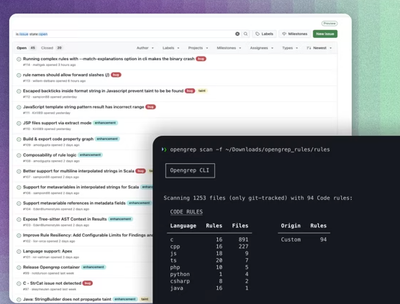aiovantage



Python library for interacting with and controlling Vantage InFusion home automation controllers.
This open-source, non-commercial library is not affiliated, associated, authorized, endorsed by, or in any way officially connected with Vantage, and is provided for interoperability purposes only.
Example
from aiovantage import Vantage
async with Vantage("192.168.1.2", "username", "password") as vantage:
async for load in vantage.loads:
print(f"{load.name} is at {load.level}%")
See the examples folder for more examples.
Features
- Fetch object configuration from your Vantage system.
- Fetch object state and subscribe to state changes (e.g. load levels, sensor readings).
- Control devices (turn on lights, set thermostats, etc).
- Uses
asyncio for non-blocking I/O. - Uses SSL connections by default, with automatic reconnection.
- Supports both lazy and eager object fetching.
Installation
Add aiovantage as a dependency to your project, or install it directly:
pip install aiovantage
Supported objects
The following interfaces/controllers are currently supported.
| Type | Description | Controller |
|---|
| AnemoSensor | Wind speed sensors | vantage.anemo_sensors |
| Area | Rooms, etc | vantage.areas |
| BackBox | Backboxes | vantage.back_boxes |
| Blind | Shades, blinds | vantage.blinds |
| BlindGroups | Groups of blinds | vantage.blind_groups |
| Buttons | Keypad buttons | vantage.buttons |
| DryContacts | Motion sensors, etc | vantage.dry_contacts |
| GMem | Vantage variables | vantage.gmem |
| LightSensor | Light sensors | vantage.light_sensors |
| Load | Lights, relays, etc | vantage.loads |
| LoadGroup | Groups of loads | vantage.load_groups |
| Master | Vantage controllers | vantage.masters |
| Module | Dimmer modules | vantage.modules |
| OmniSensor | Power, current, etc | vantage.omni_sensors |
| PortDevice | Port devices (hubs) | vantage.port_devices |
| PowerProfile | Load power profiles | vantage.power_profiles |
| RGBLoad | RGB lights | vantage.rgb_loads |
| Stations | Keypads, etc | vantage.stations |
| Tasks | Vantage tasks | vantage.tasks |
| Temperature | Temperature sensors | vantage.temperatures |
| Thermostat | Thermostats | vantage.thermostats |
If you have an object that you expect to show up in one of these controllers but is missing, please create an issue or submit a pull request.
Usage
Creating a client
Begin by importing the Vantage class:
from aiovantage import Vantage
The most convenient way to create a client is by using the async context manager:
async with Vantage("hostname", "username", "password") as vantage:
Alternatively, you can manage the lifecycle of the client yourself:
from aiovantage import Vantage
vantage = Vantage("hostname", "username", "password")
vantage.close()
Querying objects
The Vantage class exposes a number of controllers, which can be used to query objects. Controllers can either be populated lazily (by using async for), or eagerly (by using controller.initialize()).
For example, to get a list of all loads:
async with Vantage("hostname", "username", "password") as vantage:
async for load in vantage.loads:
print(f"{load.name} is at {load.level}%")
Alternatively, you can use controller.initialize() to eagerly fetch all objects:
async with Vantage("hostname", "username", "password") as vantage:
await vantage.loads.initialize()
for load in vantage.loads:
print(f"{load.name} is at {load.level}%")
If you aren't interested in the state of the objects, you can call controller.initialize(fetch_state=False) to slightly speed up the initialization:
async with Vantage("hostname", "username", "password") as vantage:
await vantage.loads.initialize(fetch_state=False)
for load in vantage.loads:
print(f"{load.name}")
All controllers implement a django-like query interface, which can be used to filter objects. You can either query by matching attributes:
async with Vantage("hostname", "username", "password") as vantage:
async for load in vantage.loads.filter(name="Kitchen"):
print(f"{load.name} is at {load.level}%")
Or by using a filter predicate:
async with Vantage("hostname", "username", "password") as vantage:
async for load in vantage.loads.filter(lambda load: load.level > 50):
print(f"{load.name} is at {load.level}%")
Fetching a single object
You can fetch a single object by id, by calling controller.aget() or controller.get():
async with Vantage("hostname", "username", "password") as vantage:
load = await vantage.loads.aget(118)
print(f"{load.name} is at {load.level}%")
These functions also implement the same query interface as controller.filter() for querying by
attributes or filter predicate:
async with Vantage("hostname", "username", "password") as vantage:
load = await vantage.loads.aget(name="Kitchen")
print(f"{load.name} is at {load.level}%")
Controlling objects
Objects also expose various methods for controlling state. For example, to turn on a load:
async with Vantage("hostname", "username", "password") as vantage:
load = vantage.loads.aget(name="Study Lights")
await load.turn_on()
Subscribing to state changes
You can subscribe to state changes by using the controller.subscribe() method:
def on_load_state_change(event, load, data):
print(f"{load.name} is at {load.level}%")
async with Vantage("hostname", "username", "password") as vantage:
vantage.loads.subscribe(on_load_state_change)
await vantage.loads.initialize()
Note that a subscription will only receive state changes for objects that have populated into the controller.






